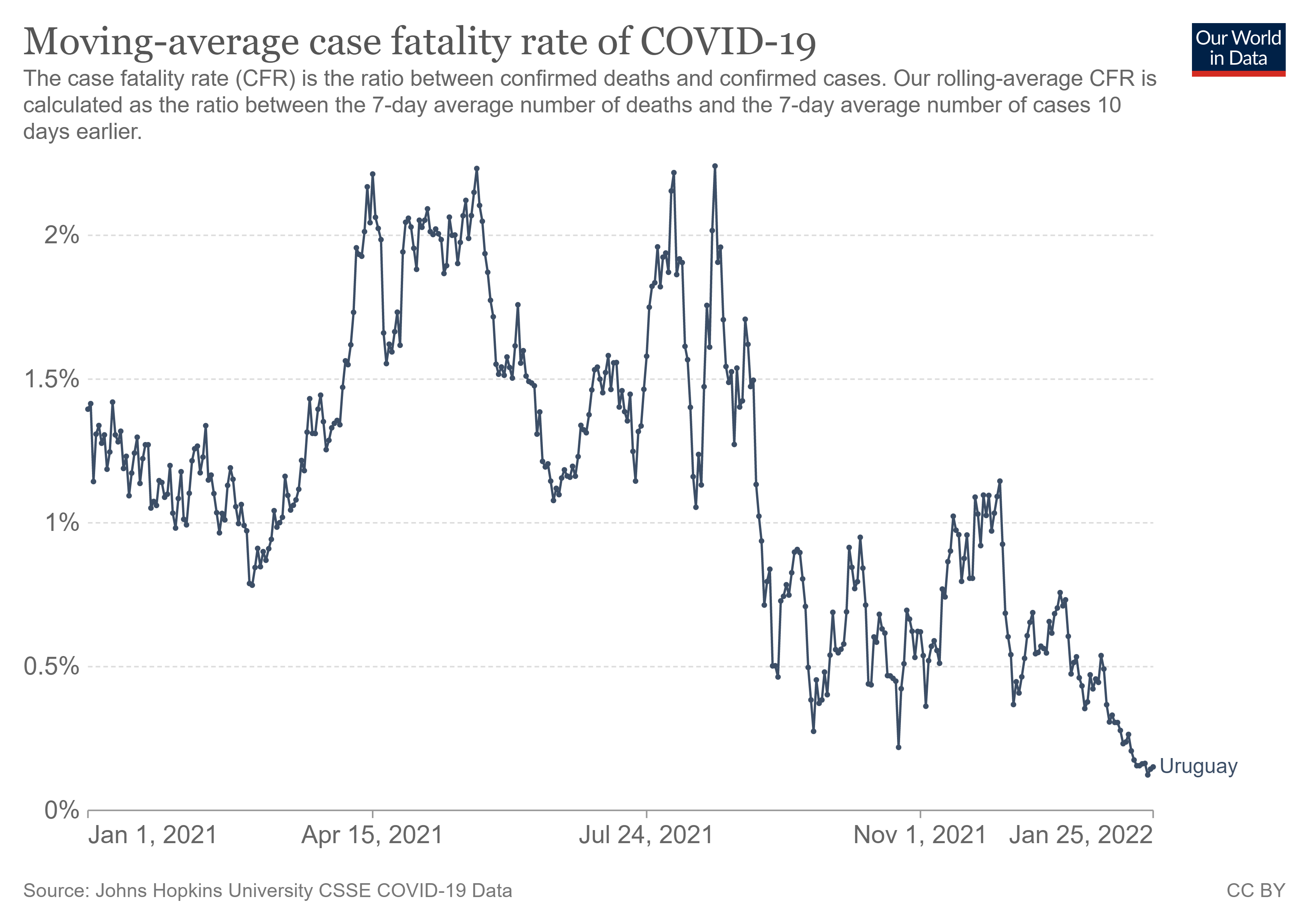RIO DE JANEIRO, BRAZIL – The Covid-19 case fatality rate in Uruguay recorded its lowest number in the epidemic. According to the numbers reported by the site Our World in Data, it stood at 0.12% on January 23 in the average of the last seven days.
In other words, only 0.12% of the people who took a positive test died from coronavirus in the average of the last week as of Sunday (as of January 25, the figure was 0.14%).
This number has been decreasing since the beginning of January. It is 16 times lower than the 2.24% recorded on August 18, when Uruguay was still suffering the last wave of infections generated by the P.1 variant that affected the country between March and August.
The virus’s lethality is calculated by dividing the average number of deaths in the last seven days by the average number of infections in the same period but ten days earlier. This ten-day period is the average time between a person testing positive and dying.
During the wave generated by P.1, Uruguay exceeded the 2% case fatality rate. In other words, out of every 100 reported infections, more than two people died.
Now, the arrival of Omicron generated a record number of infections, but this increase was not reflected in the same way in deaths due to the virus.
Lethality had already begun to drop drastically when vaccines began to affect a massive scale in Uruguay. The drop was more pronounced with the arrival of Omicron – which is more contagious but milder than other strains.
The same is happening in other countries, such as Spain and the United Kingdom, which also suffered peaks of contagion due to the spread of Omicron.
With many but milder cases, this evolution of the epidemic is what several experts have suggested as the door to the end of the pandemic. Omicron can displace delta, the previous predominant and rather more aggressive variant, leading many people to naturally generate antibodies with a slight increase in severe cases.
“The omicron variant is more infectious than delta and is overtaking it. Look at it from a pandemic point of view. The end will come when we have a very infectious variant with very mild symptoms,” explained Zvika Granot of the Hebrew University of Jerusalem’s Biology Laboratory.
The signs towards the end are becoming more apparent. The director of the World Health Organization (WHO) for Europe, Hans Kluge, had already said that it is “plausible” that we are facing the end of the pandemic after the omicron wave.
“As soon as the omicron wave subsides, there will be a global immunity for some weeks and months, either thanks to the vaccine or because people will have been immunized by the infection and a drop due to seasonality,” he said on Sunday.
Even the director-general of the WHO, Tedros Adhanom Ghebreyesus, who, after some initial errors, has been very cautious in his projections on the evolution of the virus, had also advanced that the end of the pandemic could be this year.
“We can end the acute phase of the pandemic this year; we can end covid-19 as a global health emergency,” he said on Monday 24.
With information from El Observador


